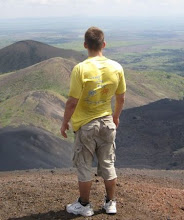
If the economic situation in Nicaragua Nicaragua
The colonial tradition of Nicaragua Latin America , U.S. United States Nicaragua Nicaragua Nicaragua
The agroexport model was applied vigorously to the country’s Pacific coast while the Atlantic coast was “oriented toward the control of natural resources for export.” Large U.S. Nicaragua
By the early 1960’s a subterranean revolt was brewing underneath the repressive dictatorship. After a major earthquake destroyed large sections of Nicaragua Managua United States
Contrary to U.S. Soviet Union . They maintained a “pragmatic” platform with mix of revolutionary socialist rhetoric, populist reform, and concessions to bourgeois elements; it was not until after the U.S.
By 1988, the Contras had been given more than one billion dollars of support from the United States US Nicaragua United States
[1] “Background Note: Nicaragua
[2] “Nicargua GDP – Real Growth Rate,” IndexMundi, (2007); http://www.indexmundi.com/nicaragua/gdp_real_growth_rate.html
[3] “Nicaragua
[4] Fred Weston, “Ortega Wins Nicaraguan Elections: Where To Now?”, In Defence of Marxism (2006); http://www.marxist.com/ortega-wins-nicaraguan-elections081106.htm
[5] C.I.A., “Nicaragua
[6] Human Development Report, “2008 Statistical Update: Nicaragua
[7] Michael Parenti quoted by Kim Peterson, “Toward An Equitable Economy,” Dissident Voice (2004); http://dissidentvoice.org/Jan04/Petersen0120.htm
[8] Westen, “Ortega Wins Nicaraguan Elections: Where To Now?”
[9] Magda Lanuza, “Nicaragua
[10] Lanuza, “Nicaragua: Ecological Debt”
[11] Ibid.
[12] Ibid.
[13] Ibid.
[14] “Background Note: Nicaragua
[15] Westen, “Ortega Wins Nicaraguan Elections: Where To Now?”
[16] “Chronology of the World Bank,” International Socialist Review (Issue 11, Spring 2000); http://www.isreview.org/issues/11/chronology.shtml
[17] Lanuza, “Nicaragua: Ecological Debt”
[18] Toni Solo, “Neo-liberal Nicaragua,” Global Policy Forum (2003); http://www.globalpolicy.org/component/content/article/162-general/28088.html









